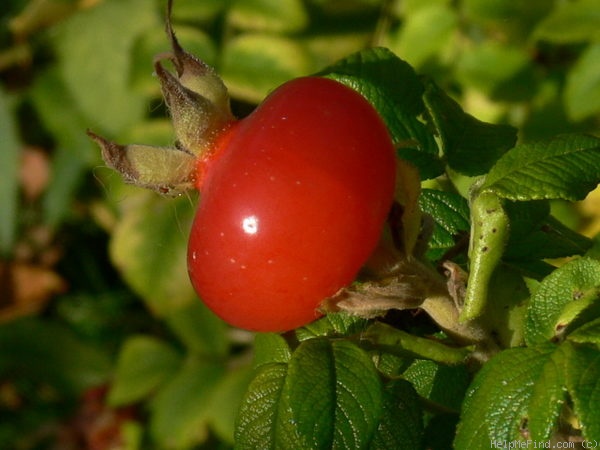|
|
'Tomato Rose' Description

Photo courtesy of flor
HMF Ratings:
157 favorite votes.
Average rating:
EXCELLENT-.
ARS:
Mauve or mauve blend Species. Exhibition name: R. rugosa
Origin:
Introduced in Australia by Camden Park in 1850 as ' Rosa ferox Lindl. synonym'.
Bloom:
Purple or red. Or white. Strong fragrance. 5 petals. Average diameter 3". Large, single (4-8 petals) bloom form. Occasional repeat later in the season.
Habit:
Armed with thorns / prickles, sends out runners, suckers on its own roots. Wrinkled (rugose) foliage.
Height: 3' to 8' (90 to 245cm). Width: up to 6' (up to 185cm).
Growing:
USDA zone 2b through 9b. Produces decorative hips. shade tolerant. Disease susceptibility: very disease resistant.
Patents:
Patent status unknown (to HelpMeFind).
Parentage:
If you know the parentage of this rose, or other details, please contact us.
Notes:
Rosa rugosa was first described by Thunberg in 1784 and introduced to Europe 50 years later, also by Thunberg. Prefers sandy or gravelly soils with average pH, although soils range in pH from 4.7 to 8.5. Salt and drought tolerant. Rosa rugosa actually performs best with periodic burning of the top growth in fall.
Native to Hokkaido and Honshu, Korea, NE China and Kamchatka, and the Russian Far East, where it's native habitat is sand dune and shores near the coast the low elevations.
Rosa rugosa is an invasive species in northern, central and western Europe and in parts of North America - New England, in Canada from Ontario to Newfoundland, and in Washington.
The Plant List considers R. kamtschatica Vent. and R. kamtschatica Red. et Thory as unresoved taxa. According to GBIF, Rosa x kamtchatica Vent. is a synonym of R. x spaethiana Graebn.
|